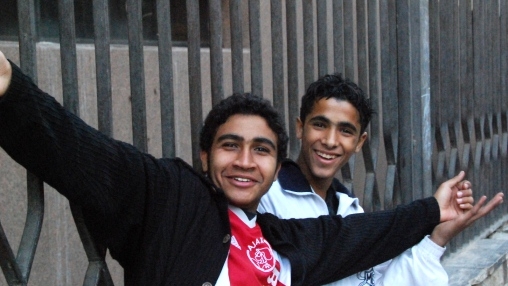While the great stretch of land from south of the Egyptian capital, Cairo to Lake Nasser on the border with Sudan, the area known as Upper Egypt, has only 40 percent of the country’s population, it is where 80 percent of the severe poverty is concentrated.
Yet unlike Tunisia, where the uprising began in the poor, rural areas before spreading to the capital, Upper Egypt appeared to play a very minor role in the January 25th revolution. Much as investment has focused on Lower Egypt and its large cities Cairo and Alexandria, Upper Egypt was all but absent from international coverage of the Egyptian revolution, and has received scant attention since.
The problems, however, persist. A new World Bank report, Reclaiming their Voices: New Perspectives from Young Women and Men in Upper Egypt sheds much needed light on this long neglected region. Young people in Upper Egypt were also inspired by the ‘Arab Spring,’ and are equally keen to reclaim their rights.
Through an extensive series of interviews, the report offers a detailed account of the many challenges faced by young people in Upper Egypt, as seen through their own eyes. Beyond listening, the report also maps out a series of policy proposals aimed at creating the conditions that would allow young people to engage more fully as citizens, and to contribute the full scope of their talents and energy through productive employment.
Listening is a start, but for this vast human resource to reach its full potential, action must follow.
Key Facts on Upper Egypt
- Egypt is undergoing a ‘youth bulge,’ with one third of the population between the ages of 15 and 29.
- More than half the population of Upper Egypt is under the age of 29, and one third are between the ages of 15 and 29.
- Upper Egypt is predominantly rural with 75 percent of its young people living in rural areas.
- Upper Egypt accounts for only 40 percent of the country’s population but 60 percent of those living in poverty and 80 percent of those living in severe poverty.
- The country poorest 1,000 villages are almost all concentrated in three governorates in Upper Egypt.
- Over one third of all young people in Upper Egypt are in the poorest wealth quintile.
- The official youth unemployment rate in Upper Egypt is 16 percent, which does not count the ‘jobless,’ those neither employed nor seeking work, a state that describes almost half of all young people in Upper Egypt.
- 70 percent of young women in upper Egypt are jobless.
- Illiteracy rates for young people in Upper Egypt are at 17 percent, higher than the national average, with illiteracy rates for females more than twice those of males.
- Less than 4 percent of illiterate females are employed.
- Returns on education in Upper Egypt are high, with labor force participation rates for female university graduates as high as 58 percent, higher than the national average of 47 percent, and 84 percent for male university graduates.
- Almost all young women in Upper Egypt with no formal education are jobless.
- Young people in Upper Egypt cite the lack of a private sector, the poor quality of the education, nepotism and corruption as the reasons for the high levels of unemployment.
- Government jobs continue to be viewed as the only socially acceptable form of employment in Upper Egypt, especially for women.
- Family wealth and education play a significant role in employment outcomes in Upper Egypt.
- Young people have a low level of civic engagement in Egypt, with less than five percent in the country as a whole, and only three percent in Upper Egypt belonging to social, artistic or political groups.
- Prior to the January 25th revolution, young people were discouraged from civic engagement by a combination of parental opinion, state policies and harassment by security forces.
- Young people in Upper Egypt express a generally low opinion of available youth centers, as offering little in the way of cultural or educational activities, lacking equipment, and catering only to men.
- The quality of healthcare in Upper Egypt is considered inadequate, with doctors, pharmaceuticals and specialized services unavailable.
- There was widespread support for the January 25th uprising among young people in Upper Egypt, which was manifested in a series local demonstrations, and an unprecedented surge in spontaneous, popular initiatives, such as efforts to clean the streets and the establishment of new community alliances.

